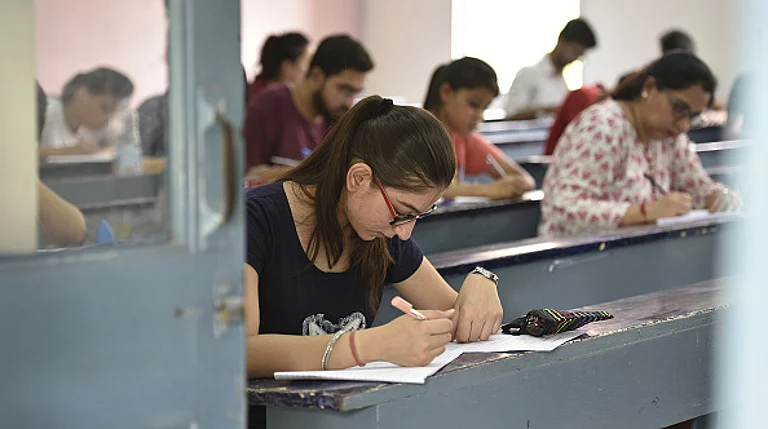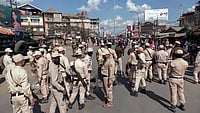Significantly high temperatures over northwest India, Gujarat, Konkan and Goa may have an adverse impact on wheat and other crops, the India Meteorological Department said on Monday.
Maximum temperatures in Gujarat, Rajasthan, Konkan, Goa and coastal Karnataka have remained in the range of 35 to 39 degrees Celsius -- four to nine degrees above normal -- since February 13, the Met office said in a statement.
They are 6 to 9 degrees Celsius above normal in some parts of Saurashtra and Kutch and south west Rajasthan. Maximum temperatures in Punjab, Haryana, Chandigarh and Delhi have remained five to nine degrees Celsius above normal since February 18.
"Significantly higher-than-normal maximum temperatures over northwest India, Gujarat, Konkan and Goa may be attributed to the absence of any active western disturbance in February, a dry spell prevailing over the plains and subdued precipitation over hills," the India Meteorological Department (IMD) said.
It said an anti-cyclone over south Gujarat led to subsidence of air and the warming over the region. Anticyclones are centres of high pressure from where winds blow out in every direction. The anticyclone over India sends warm winds from north-west to central and western India, causing heat waves.
"This higher day temperature might lead to an adverse effect on wheat as the crop is approaching reproductive growth period, which is sensitive to temperature," the IMD said. High temperatures during the flowering and maturing periods leads to loss in yield. There could be a similar impact on other standing crops and horticulture, it said.
The IMD said farmers can go for light irrigation if the crop appears to be under stress. "To reduce the impact of higher temperatures, add mulch material in the space between two rows of vegetable crops to conserve soil moisture and maintain soil temperature," it said.
Earlier in the day, the IMD withdrew its heatwave warning for isolated places in Kutch and Konkan regions due to sea breeze leading to a drop in temperatures. The Met office on Sunday said isolated heatwave "conditions are likely over Kutch and Konkan during the next two days". Officials had said it was the earliest a heatwave alert was issued for these regions.
"We have withdrawn the heatwave warning for these regions with the temperatures showing a decreasing tendency due to sea breeze. Maximum temperatures are predicted to drop by two to three degrees Celsius in the next two-three days," said Naresh Kumar, a senior scientist at the IMD.
A heat wave is declared if the maximum temperature of a station reaches at least 40 degrees Celsius in the plains, at least 37 degrees in coastal areas and at least 30 degrees in hilly regions, and the departure from normal is at least 4.5 degrees. In March last year, the warmest recorded in the country since 1901, heat caused a decline of 2.5 per cent in wheat yields.
The weather department had attributed the unusual heat to the lack of rainfall due to the absence of active western disturbances over north India and any major system over south India. The country as a whole had logged just 8.9 mm rainfall, which was 71 per cent lower than its long period average of 30.4 mm.


























